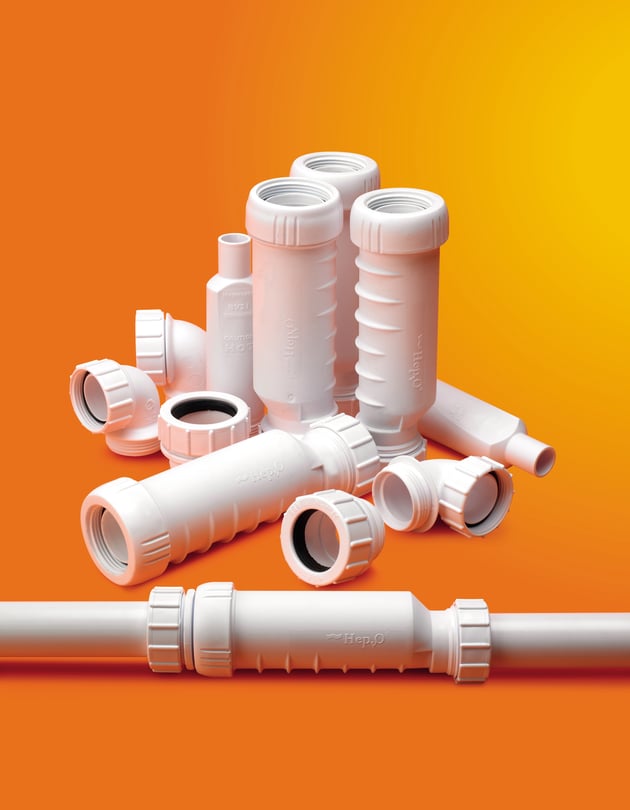Water traps have been an essential part of a plumbing system for many years creating a seal between living spaces in buildings and sewers using a seal created with water held in the pipe to trap noxious gases, germs, foul smells and contaminated aerosols.
They have developed over time and now come in a range of shapes and sizes to suit a whole host of requirements. For limited space beneath many baths and shower trays, shallower traps are the have been designed, whereas ‘P’ and ‘S’ traps are generally used beneath kitchen sinks. Alternatively, ‘bottle’ traps are usually installed for pedestal-mounted washbasins, as they fit more easily in the small area between the plinth and the wall.
Despite their different shapes and designs, all water traps work on the same principle of using water to create a seal and prevent the ingress of unhygienic gases and airborne particles from the sewer below.
How hygienic are water traps?
Water traps are a popular choice due to their low cost and familiarity among plumbers, however, they do have some disadvantages, especially in certain applications. Water traps can fall into disrepair and become ineffective without regular maintenance, which can result in unhygienic environments. For example, due to their curved design, blockages are common, which can be a time-consuming task to correct. Traditional traps can also fail by losing their water seal due to evaporation, siphonage or low use. This is especially common in spaces such as holiday homes where plumbing systems are left unused for long periods of time, meaning they are at risk of the traps drying out. When this occurs, protection is lost and toxic air can enter the building, potentially bringing harm to the inhabitants.
The spread of viruses is of particular interest at the moment. An investigation by the World Health Organisation and Hong Kong Health Authority in response to the 2003 SARS epidemic has proven that viruses can also spread through pipework via wastewater and dried-out water traps, meaning they can aid the spread of germs and viruses.
Covid-19, like SARS, is a Coronavirus which spreads when carried in small water droplets. It has been found in waste-water from buildings in a number of countries. This means that public health is also at risk from Covid-19 – also called SARS-2 – when foul sewer gas enters the living space.

Waterless traps
Wavin Osma’s HepvO waterless trap provides a hygienic alternative to the traditional trap because it cannot dry out. Its self-sealing membrane provides permanent, watertight protection.
Furthermore, a 2017 study by Heriot Watt University concluded that if HepvO had been installed at the Amoy Gardens apartment blocks where the biggest SARS outbreak took place, would have prevented the onward spread of the virus throughout the building.
With the HepvO waterless trap, there is no stagnant water. The membrane has been developed so that the silicon valve opens as the water enters it and closes again as the flow stops. The rigid body of the outer pipe prevents distortion and as the membrane is so lightweight, only a small amount of water is required to open it. This means it is also suitable for use in condensate drainage systems for boilers, air conditioners and unvented hot water storage units.
HepvO waterless trap is not only a hygienic solution but also is more manageable and easy to maintain than a traditional water trap. The straight-through design limits the build-up of waste material and ensures an outstanding flow, therefore reducing the chance of blockages. HepvO is ideal for spaces that are left unoccupied for long periods of time, as they are less likely to fail and do not come with maintenance risks, such as drying out. HepvO is also versatile as it can be installed vertically or horizontally, making it suitable for a wide range of plumbing applications.
For guidance in selecting the right waterless trap system for your project’s needs, visit https://www.wavin.com/en-gb/catalogue/waste-water/waterless-traps.